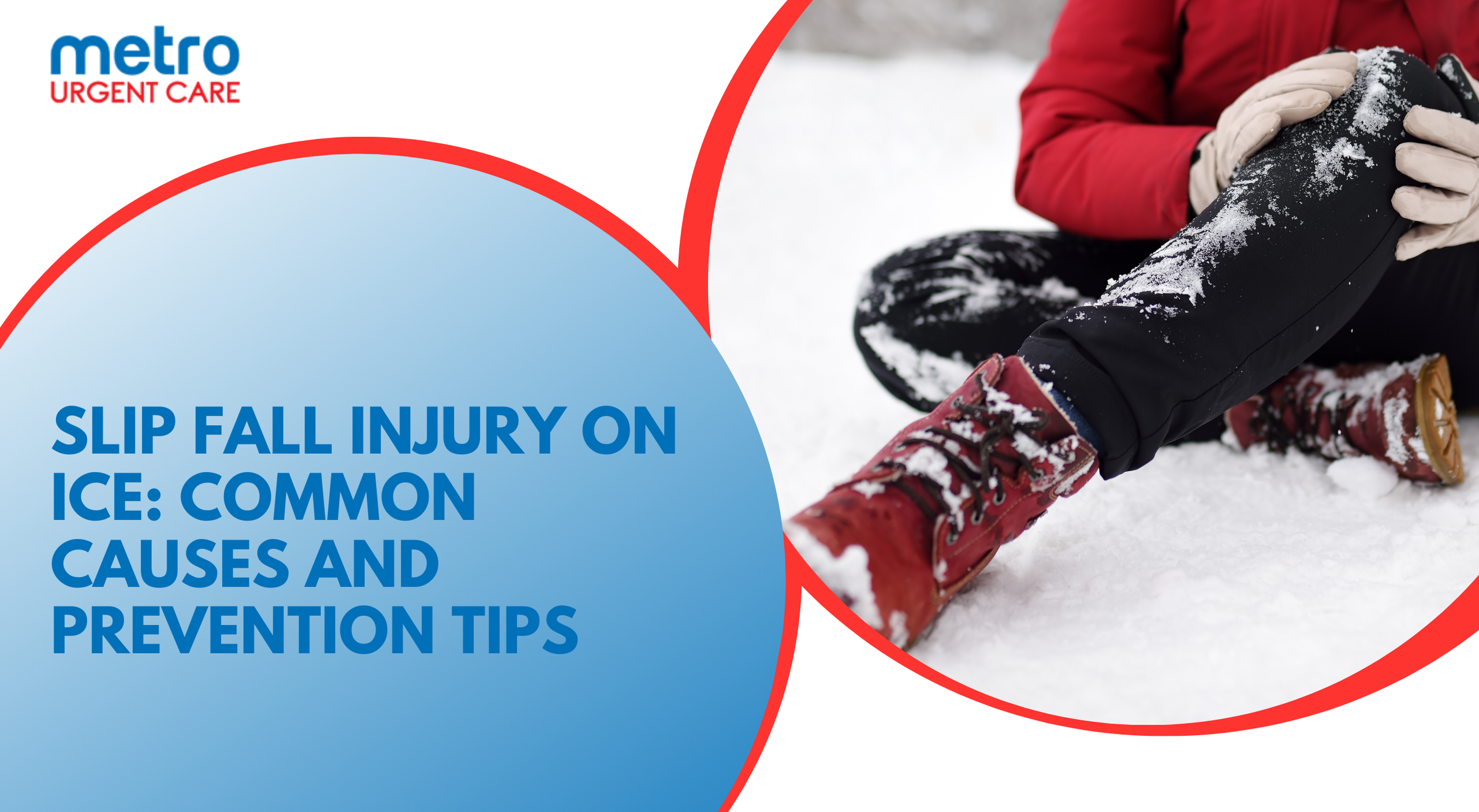


A slip and fall injury on ice can happen in an instant, turning a routine walk into a painful ordeal. As temperatures drop, icy sidewalks, driveways, and parking lots become dangerous, leading to countless yearly injuries. These accidents not only affect mobility but can also result in hefty medical bills and lost workdays. Preventing slips on snow and ice is crucial for personal safety and reducing risks during the winter months.
Let’s explore what causes these falls and how to stay safe this winter.
As temperatures drop, the risk of slipping on ice rises. Knowing the risks lurking beneath your boots is the key to preventing a fall:
Accumulated snow and ice create slippery surfaces, especially when walkways are not treated with salt or sand. Neglecting snow removal increases the chances of slipping, particularly in high-traffic areas.
Snowfall followed by freezing temperatures can lead to ice formation, making surfaces dangerously slick. Freezing rain is even more hazardous, forming an invisible layer of ice known as “black ice,” which is difficult to detect.
Cracks, bumps, and uneven walkways become more treacherous in winter. Snow cover can hide these irregularities, increasing the risk of a slip-fall injury.
Poorly lit areas make it harder to see icy patches, increasing the likelihood of slipping, especially in the early morning or late evening. Proper lighting is crucial in preventing slips on snow and ice.
While anyone can fall on ice, certain individuals are at a higher risk of serious injury:
Older adults, individuals with mobility problems, and those with poor balance are at a higher risk of severe injuries from falls. Recovery can also be longer for these individuals.
Shoes with smooth soles or high heels offer little traction on icy surfaces. Wearing non-slip, insulated boots with deep treads significantly reduces the risk of slipping.
Walking too fast, texting, or carrying heavy loads on icy areas increases the chance of losing balance and falling. Staying focused and moving cautiously can help prevent falls.
Taking proactive steps can significantly lower the risk of slip and fall injuries on ice. Here are essential measures for ice slip and fall prevention:
Homeowners and business owners should apply salt or sand to sidewalks, driveways, and entrances to prevent ice buildup. Clearing snow immediately after a storm prevents it from turning into ice.
Invest in winter boots with non-slip soles and proper ankle support. Ice grips or traction cleats can provide additional stability on icy surfaces.
Instead of long strides, take short, deliberate steps while keeping your center of gravity over your feet. This technique helps maintain balance on slippery surfaces.
Applying ice melt products before a snowstorm or freezing rain event can prevent the formation of dangerous ice patches. Keep a supply of these products handy during the winter months.
Ensure that outdoor pathways, stairs, and driveways are well-lit to improve visibility and help identify potential hazards before stepping onto them.
Despite all precautions, accidents can still happen. Here's what to do if you slip and fall on ice:
Assess your injuries immediately. Check for any broken bones, head injuries, or other serious problems. If you're in significant pain or suspect a serious injury, don't move and call for help.
Even if you don't feel seriously injured right away, visiting a healthcare provider after a slip and fall is essential. Some injuries, such as soft tissue damage or concussions, may not be immediately apparent.
If possible, document the incident by taking photos of the area and noting any contributing factors, such as poor lighting or untreated ice. This documentation can be important for medical or legal purposes.
Ongoing safety measures help reduce the likelihood of future injuries. Here are a few additional steps to enhance winter safety:
Educate family members, employees, or community members about winter safety practices. Awareness programs can reduce accidents and improve preparedness.
Employers and homeowners should establish regular maintenance routines, such as shoveling snow, using ice melt, and checking for hazards like broken sidewalks or inadequate lighting.
Slip and fall injuries on ice can be painful, costly, and disruptive. However, by understanding the causes and taking proactive steps, you can significantly reduce the risk of falling. Simple measures like wearing proper footwear, walking carefully, using ice melt, and ensuring adequate lighting can make a significant difference.
Slips and falls on ice can lead to serious injuries. Don’t take chances this winter! At Metro Urgent Care, we provide expert care and treatment for fall-related injuries to get you back on your feet quickly.
Get in touch with us for expert care and a speedy recovery!